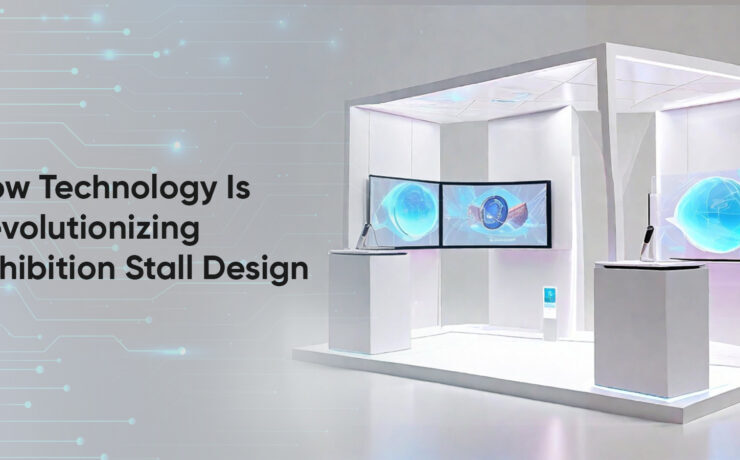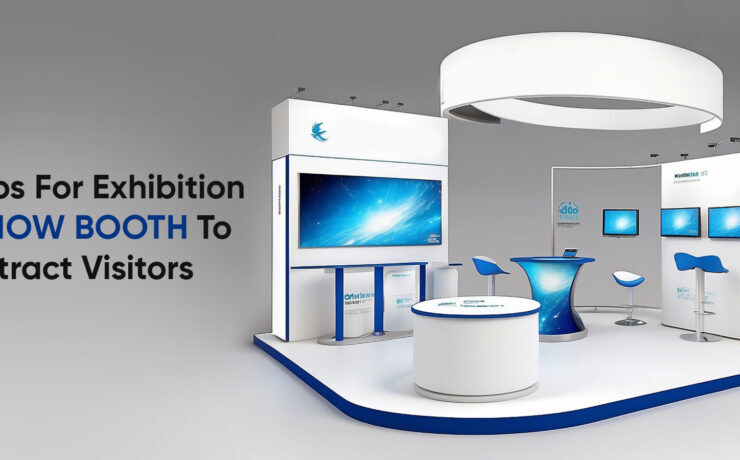How Technology Is Revolutionizing Exhibition Stall Design

When it comes to showcasing products, exhibitions play an important role in showcasing products as well as services to a targeted audience. The design of exhibition stalls stands out as a crucial aspect. The evolution of technology has significantly revolutionized exhibition stall design, reshaping the landscape of marketing and branding strategies.
The Evolution of Exhibition Stall Design:
Traditionally, exhibition stall design relied heavily on manual labor and basic materials like wood, metal, and fabric.
- The Early Days of Exhibition Stalls:
In the early days of trade shows and exhibitions, exhibition stalls were typically simple and functional structures designed to showcase products and facilitate interactions with visitors. These stalls often consisted of basic booth setups with standard displays, signage, and product samples arranged in a systematic manner. While functional, these traditional exhibition stalls lacked visual appeal and often failed to differentiate brands in crowded exhibition halls. Exhibitors started investing in custom-built stalls that reflected their brand identity, values, and unique selling propositions.
- Innovations in Technology and Design:
Advancements in technology have played a significant role in shaping the evolution of exhibition stall design. Modern exhibition stalls now incorporate state-of-the-art audiovisual elements, interactive touchscreens, and virtual reality simulations to showcase products and convey brand messages in dynamic and captivating ways.
Exhibitors are increasingly opting for environmentally conscious materials, energy-efficient lighting solutions, and reusable booth components to minimize their environmental footprint and align with sustainable practices. These stalls focus on eco-friendly designs and resonate with eco- conscious consumers.
- The Shift Towards Experiential Marketing:
One of the most significant trends in exhibition stall design is the shift towards experiential marketing. When it comes to discussing a shift in marketing strategies we notice an inclination towards experiential models. These include live demonstrations such as workshops or even samples. These exhibition stall designs offer an opportunity for visitors to connect with brands and create memorable experiences.
Integration of Virtual Reality (VR) and Augmented Reality (AR):
One of the most significant technological advancements in exhibition stall design is the integration of virtual reality (VR) and augmented reality (AR). The immersive experiences created with the help of AR and VR technologies for new experiences.
Exhibition stall designers in Delhi are embracing VR and AR to create memorable experiences that leave a lasting impression on attendees.
- With AR-enabled mobile devices, visitors can scan QR codes or markers to unlock additional content, view product demonstrations, and engage with interactive displays right from their smartphones or tablets.
- Tailor VR and AR experiences to the preferences and interests of your target audience, ensuring relevance and engagement.
- There should be clear instructions on how to use AR as well as VR to ensure smooth experience as a user.
Applications of VR and AR in Exhibition Stall Design:
- Product Demonstration: VR and AR allow showcase products in realistic environments, offering virtual demonstrations that highlight key features and functionalities.
- Interactive Presentations: Creation of storytelling experiences using VR and AR, guiding visitors through branded narratives and engaging content.
- Gamification: AR-powered games and interactive experiences add an element of fun and excitement to exhibition stalls, encouraging visitor participation and engagement.
Interactive Touchscreens and Digital Displays:
Gone are the days of static posters and printed brochures. Exhibition stall designers in Delhi are leveraging interactive technology to create personalized experiences that resonate with the diverse audience present in the city. In today’s digital age, exhibition stall design has evolved beyond traditional static displays to incorporate interactive technologies that captivate and engage audiences.
Traditional static displays and printed materials are no longer sufficient to capture the attention of modern audiences. Leveraging Interactive Touchscreens for Engagement Interactive touchscreens offer exhibitors a dynamic platform to showcase products, services, and brand messaging in a visually compelling and interactive format.
Enhancing Brand Identity and Messaging Interactive touchscreens and digital displays enable exhibitors to reinforce brand identity and messaging in a visually impactful and memorable way.
Designing for Engagement and Interaction Effective implementation of interactive touchscreens and digital displays requires careful consideration of user experience and interface design.
Measuring Success and ROI One of the key advantages of interactive touchscreens and digital displays is the ability to track and measure visitor engagement and interaction.
The Power of 3D Printing in Exhibition Design
Another game-changing technology in exhibition stall design is 3D printing and rapid prototyping. These technologies allow designers to create intricate and customized elements for exhibition stalls with unparalleled precision and efficiency.
Traditional methods of fabrication often limited designers’ creativity and imposed constraints on the types of structures and elements that could be incorporated into exhibition stalls. With 3D technology for printing designers have freedom to explore new ways to create designs.
- One of the key advantages of 3D printing in exhibition stall design is the ability to customize and personalize elements to meet the unique needs and preferences of exhibitors and their target audiences.
- 3D printing offers practical benefits in terms of efficiency and time-to-market for exhibition stall design. Traditional manufacturing processes often involve lengthy lead times whereas 3D printing enables rapid prototyping.
- Another compelling aspect of 3D printing is its potential to reduce waste and minimize environmental impact in exhibition stall design. Traditional manufacturing methods often result in significant material waste, as excess material is cut away from larger blocks or sheets.
In Conclusion:
The constant change in technology has led to revolution of exhibition stall designs. These have led to development from still showcase pieces to immersive experiences. Exhibition stall designers in Delhi help businesses to benefit from these and give the brand the target audience they need. Skyline is a team of young, creative, enthusiastic and dynamic professionals with a sparkling stream of ideas having vast experience in the field of Events & Exhibitions
Our goal is to give each & every event a different Meaning, Identity and a Vision with true professionalism. Skyline Events is one of the best exhibition stall designers in Delhi & offer premium quality of exhibition stand designs & construction.




